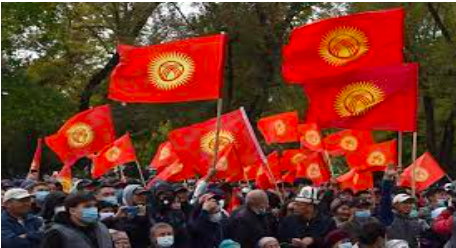Ghulam Rassul Galwan
Posted on : August 6, 2020Author : AGA Admin

The Galwan Valley derives its name from the river Galwan, which originates in the Karakoram range through Aksai Chin and Eastern Ladakh to join the river Shyok, an important tributary of the Indus River. This river, and the Valley, holds significant strategic importance for both nations, but particularly India. The current standoff on the border traces back to China’s objections over a bridge the Indian government is building across the Galwan Nullah (as it was first known). Interestingly, few Indians know Ghulam Rassul Galwan, a remarkable Ladakhi traveller and explorer, whose name the river has. Through his remarkable autobiography, titled ‘Servant of the Sahibs’, he described his expeditions through the high Himalayas into Tibet and Yarkand (now situated in present-day Uyghur Autonomous Region of Xinjiang, China), and through the Pamir Mountains into Afghanistan, the Karakoram range and other parts of Central Asia. Galwan assisted many well known European explorers towards the end of the 19th century and into the early 1920s. Galwan traversed these parts during a period in history known as ‘The Great Game’ when both the Russian and British Empire jostled for strategic supremacy over Afghanistan and neighbouring territories in Central and South Asia. Galwan lived a remarkable life. It included accompanying the likes of Major HH Godwin-Austen, the English geologist responsible for measuring the height of K2 (the world’s second-highest peak) in 1887. He also travelled alongside Sir Francis Younghusband, the British empire-builder, spymaster and army officer responsible for the signing of the 1904 Anglo-Tibetan Treaty, for more than six years (1890-96) during different expeditions.
The name ‘Galwan Nullah’, or Galwan River as we know it today, came during the 1892 mission to the Pamir Mountains with Charles Murray, the 7th Earl of Dunmore and a Lieutenant-Colonel in the British Army at the time. While the purpose of that trip remains a minor mystery, what is known is that on the journey back, the caravan strayed away from traditional routes in Aksai Chin because of bad weather. Then there came a moment when a wall of mountains and steep gorges trapped them. Unable to find a way out, a 14-year-old Galwan stepped up to find a possible way out of this maze. Much to the amazement of Murray’s team, the young teen used all his instincts and knowledge of treacherous terrain to find a relatively easier route through a ravine which kept the expedition going without much trouble. Historian Abdul Ghani Sheikh writes that Murray was so pleased with Galwan’s efforts that he decided to name the newfound passage through the ravine as the ‘Galwan Nullah’ and the Valley as ‘Galwan Valley’.
Born Rassul Galwan into a poverty-stricken family sometime around 1878, Galwan emerged from the system of corvée labour known as ‘begar’ or ‘res.’ This system forced villages along major trade routes to supply labour, animals, fodder and sometimes even food, for official traders and travellers who passed through. Due to his family’s precarious financial situation, Galwan also had no choice but to go on these long-distance and perilous expeditions from the age of just 12, for meagre sums. He began as a servant for a Kashmiri merchant in 1889. For the next 35 years, he was either part of or leading expeditions with Western explorers, including the Italians and Americans. A multi-linguist, he spoke his native Ladakhi, Turki and Urdu, alongside a basic understanding of Tibetan and Kashmiri. It was during one of these expeditions that Galwan also picked up English alongside American adventurer Robert Barrett during their travels in the early 1900s. By the time he teamed up with Barrett, Galwan had risen to the rank of Caravan Bashi or the man-in-charge of the caravan. He oversaw the collection of money, buying and hiring of animals and men, estimated, obtained and doled out supplies and also acted as “a diplomatic representative for his sahib, dealing for him with governors and officials.” It was on the insistence of Barrett and his wife Katherine that Galwan ended up writing the book ‘Servant of the Sahibs,’ published in 1923. Galwan passed away in 1925. But the history he saw and was part of, in many ways, is repeating itself.




